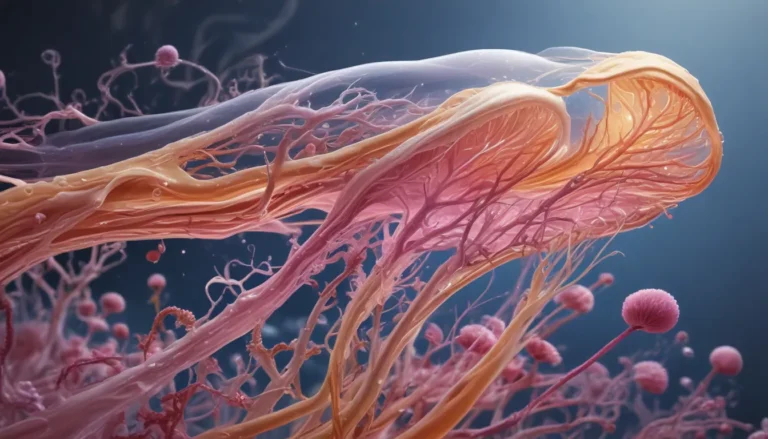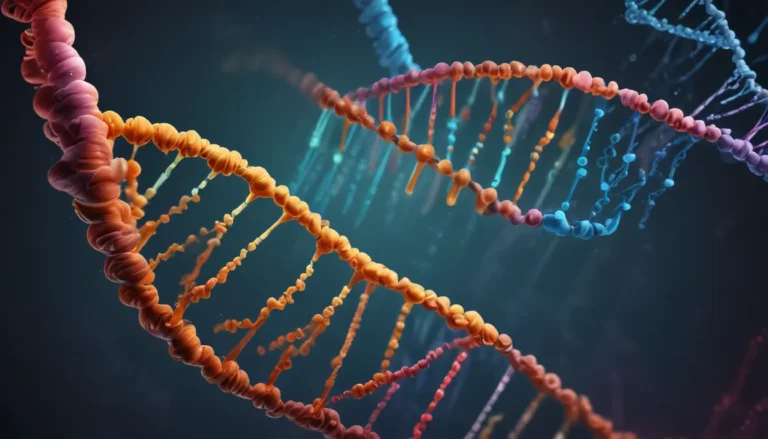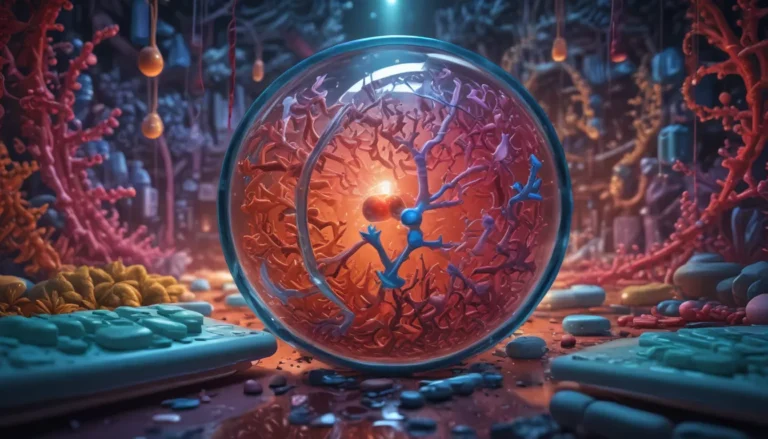A Note About Images: The images used in our articles are for illustration purposes only and may not exactly match the content. They are meant to engage readers, but the text should be relied upon for accurate information.
In the vast realm of biology, multipotency stands out as a captivating concept that showcases the extraordinary ability of certain cells to transform into multiple cell types. This remarkable trait plays a pivotal role in various bodily functions, highlighting its significance in the realms of regenerative medicine and developmental biology. Join us as we uncover 15 astounding facts about multipotency that will broaden your understanding of the complexity and versatility of the human body.
The Marvel of Multipotency
- Superhero Powers for Cells: Multipotency empowers cells to differentiate into diverse cell types, facilitating growth, repair, and tissue maintenance. It’s like a superpower for cells!
- Game-Changer for Healthcare: Scientists are exploring how multipotent cells could revolutionize disease treatment, injury repair, and personalized medicine. The potential impact on healthcare is immense!
Exploring Multipotency in Depth
Unveiling the Nature of Multipotency
Multipotency defines the remarkable capability of specific cells to evolve into various specialized cell types within the body. These cells are essential for the growth, repair, and maintenance of tissues and organs, showcasing their versatile nature.
Stem Cells: Nature’s Multipotent Wonders
Stem cells, including embryonic and adult stem cells, epitomize the essence of multipotency. These cells possess the extraordinary ability to differentiate into nerve cells, muscle cells, blood cells, and more, guided by environmental cues and signals.
The Role of Multipotency in Tissue Development and Regeneration
During embryonic development, multipotent cells orchestrate the creation of specialized cells that form diverse organs and tissues. Similarly, in tissue regeneration, these cells spring into action, replacing damaged or deceased cells to restore normal tissue function.
The Symphony of Organogenesis
Organogenesis, the intricate process of organ formation during embryonic development, heavily relies on multipotency. These versatile cells transform into specific cell types, contributing to the creation of complex organs like the heart, brain, liver, and kidneys.
Illuminating the Path of Regenerative Medicine
The capacity of multipotent cells to differentiate into a myriad of cell types holds immense promise for regenerative medicine. Ongoing research endeavors aim to leverage these cells to combat diseases, injuries, and degenerative conditions, paving the way for innovative therapeutic interventions.
The Molecular Orchestra of Multipotency
Specific genes and signaling pathways intricately regulate the multipotency of cells. These molecular mechanisms play a pivotal role in balancing self-renewal and differentiation, ensuring the optimal functioning of multipotent cells.
From Pluripotency to Multipotency: Unleashing Versatility
Embryonic stem cells exhibit pluripotency, a higher level of potency compared to multipotency. The capacity to differentiate into cells of all three germ layers grants these cells unparalleled versatility in cellular differentiation.
Rewriting Cellular Destinies: Inducing Multipotency
Scientists have devised techniques to reprogram cells, inducing multipotency in certain cell types. One notable example is the creation of induced pluripotent stem cells (iPSCs) from differentiated cells, opening doors to diverse cellular differentiation paths.
The Spectrum of Multipotency: Varied Shades of Potential
Multipotency is not a binary attribute; cells showcase varying degrees of this trait. While some cells exhibit a high level of multipotency, capable of evolving into multiple cell types, others demonstrate a more restricted potential.
Nurturing Potential: The Influence of Environmental Factors
The stem cell niche, the microenvironment surrounding cells, holds sway over the regulation of multipotency. Growth factors, extracellular matrix components, and cell-cell interactions play pivotal roles in shaping the fate and potential of multipotent cells.
Healing Hands of Multipotency: Aiding in Injury Response
When tissues suffer damage or disease, multipotent cells spring into action, initiating the healing process. By metamorphosing into specific cell types crucial for tissue regeneration, these cells contribute significantly to restoring normal tissue function.
Unveiling the Diversity of Cell Potential
Multipotency stands as a distinctive feature found in a specialized subset of cells. While some cells possess the ability to differentiate into multiple lineages, others exhibit a more limited differentiation potential, known as unipotency or oligopotency.
A Tale of Multipotency Across Species
The extent of multipotency varies across species and even within different tissues of the same organism. Certain organisms boast highly multipotent cells, facilitating extensive regeneration, while others possess more restricted regenerative capacities.
Pioneering Advances in Tissue Engineering
Researchers delving into multipotency gain invaluable insights into cell behavior and lineage commitment. This knowledge serves as a cornerstone for enhancing tissue engineering methodologies, striving to craft functional tissues and organs within laboratory settings.
Towards Personalized Precision: The Promise of Multipotency
Harnessing the potential of multipotent cells offers a glimpse into the realm of personalized medicine. The ability to generate patient-specific cells for transplantation or disease modeling could herald a new era in healthcare, ushering in tailored treatments and enhanced patient care.
Embracing the Boundless Horizons of Multipotency
In closing, the realm of multipotency stands as a captivating and indispensable frontier in biology. This extraordinary phenomenon highlights the capacity of certain cells to metamorphose into diverse cell types, showcasing its significant implications across stem cell research, tissue engineering, and regenerative medicine.
Understanding multipotency lays the foundation for groundbreaking advancements in healthcare, offering new avenues for disease treatment, tissue repair, and overall patient well-being. The 15 astounding facts unveiled in this exploration shed light on the remarkable abilities of multipotent cells, unveiling a world of cellular development and function waiting to be discovered.
FAQs: Decoding the Enigma of Multipotency
-
What is multipotency?
Multipotency refers to the ability of specific cells to differentiate into multiple cell types. -
How does multipotency differ from pluripotency?
Pluripotent cells possess the ability to differentiate into any cell type in the body, whereas multipotent cells exhibit a more limited range of differentiation options. -
Can multipotent cells be utilized in regenerative medicine?
Yes, multipotent cells demonstrate substantial potential in regenerative medicine, offering prospects for innovative therapies in treating injuries and diseases.
Paving the Path to Transformation
The astounding capabilities of multipotency hold immense promise for regenerative medicine, offering novel avenues for addressing various medical conditions. Coupled with advancements in biotechnology, multipotent stem cells could redefine healthcare, ushering in personalized treatments and improved patient outcomes. Delve deeper into the captivating realm of multipotency and embrace its promising applications in our ever-evolving scientific landscape.
An Invitation to Explore and Learn with Us
Our dedication to delivering engaging and credible content remains unwavering as we strive to offer valuable insights and information to our readers. Each fact presented on our platform is a contribution from individuals like you, enriching our repository with diverse perspectives and knowledge. Trust in our commitment to authenticity and quality as you embark on a journey of exploration and learning with us.






